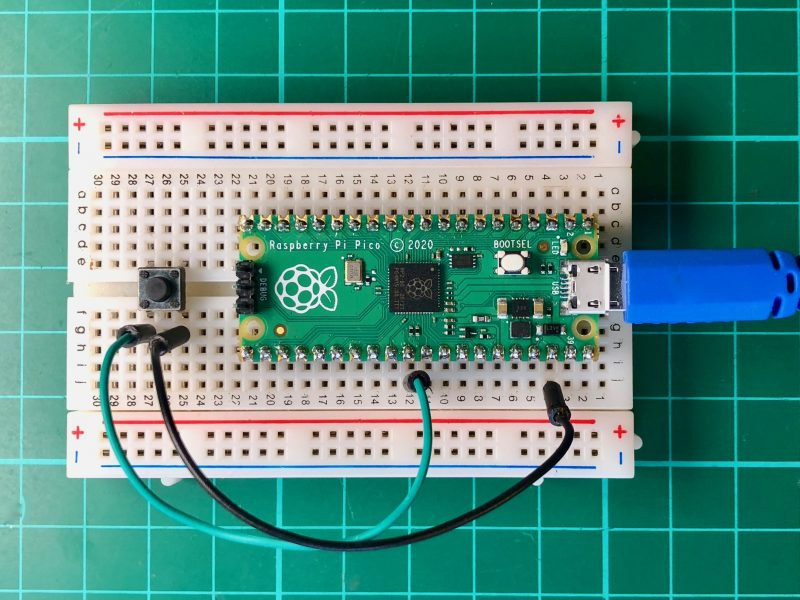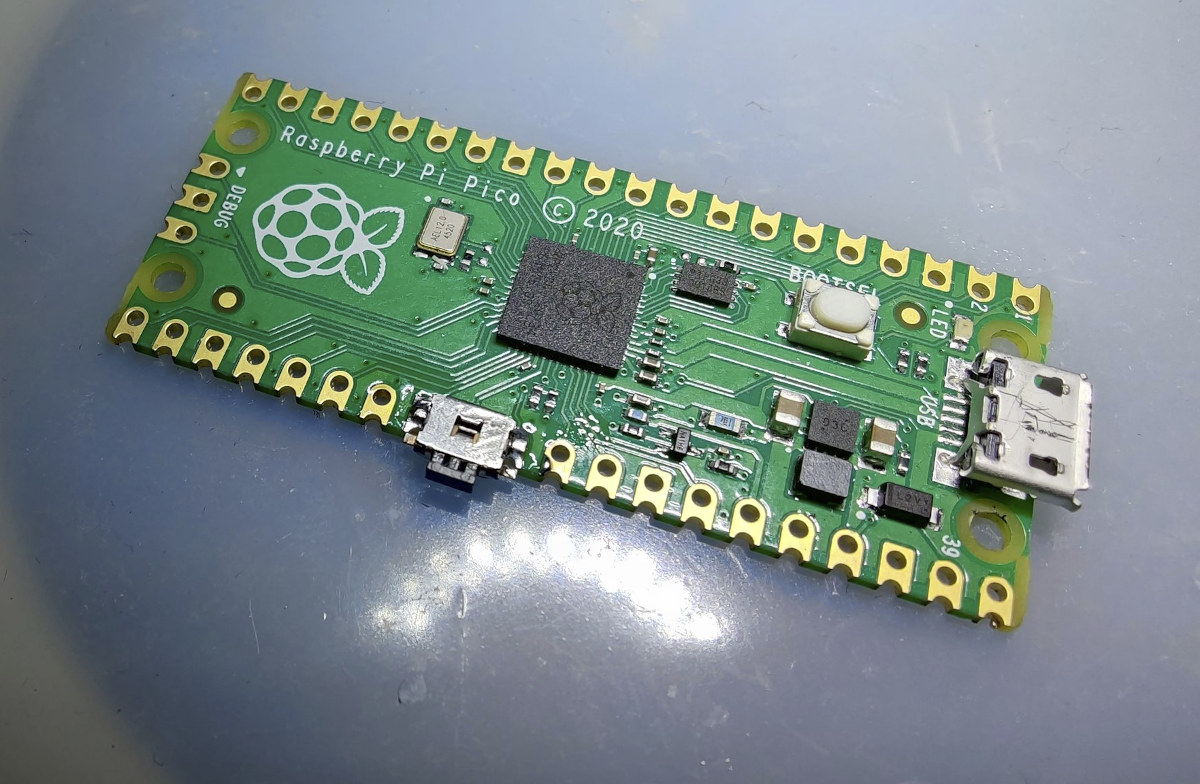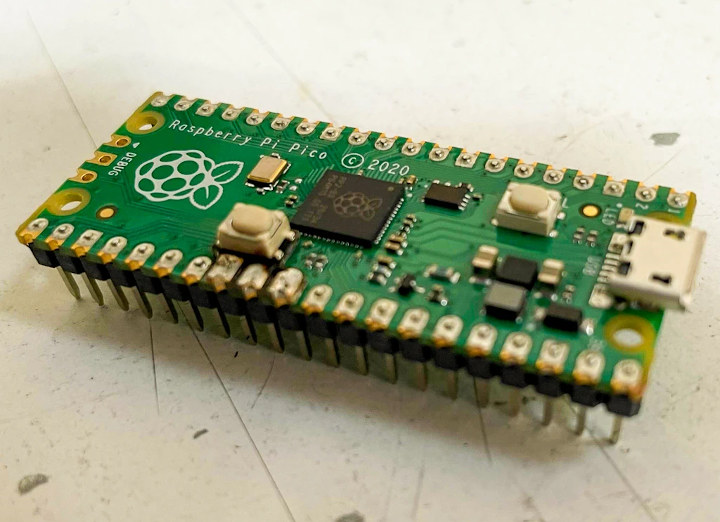The Raspberry Pi Pico is a nice little board, but if you program in C language, you’d need to disconnect the micro USB cable each time you’d like to flash the UF2 firmware. That’s not convenient and could damage your board over time. The Raspberry Pi Foundation even decided to write a blog post explaining how to add a reset button to your Raspberry Pi Pico using a breadboard circuit. Here’s what it looks like.
That works but you may want to use that breadboard for another circuit, so the reset button takes space. Another solution is to program with a Raspberry Pi board and use SWD mode to upload code using the debug port, instead of using mass storage (BOOTSEL) mode. I’ve also found out that most baseboards for the Pico board will include a reset button.
But this morning, I’ve come across another solution that looks pretty neat.
The image above is courtesy of a tweet from Timon who noticed the push button used in his Piunora CM4 Arduino carrier board could also be used as a reset button for Raspberry Pi Pico. He even linked to the part on digikey, a tactile switch from Panasonic Components.
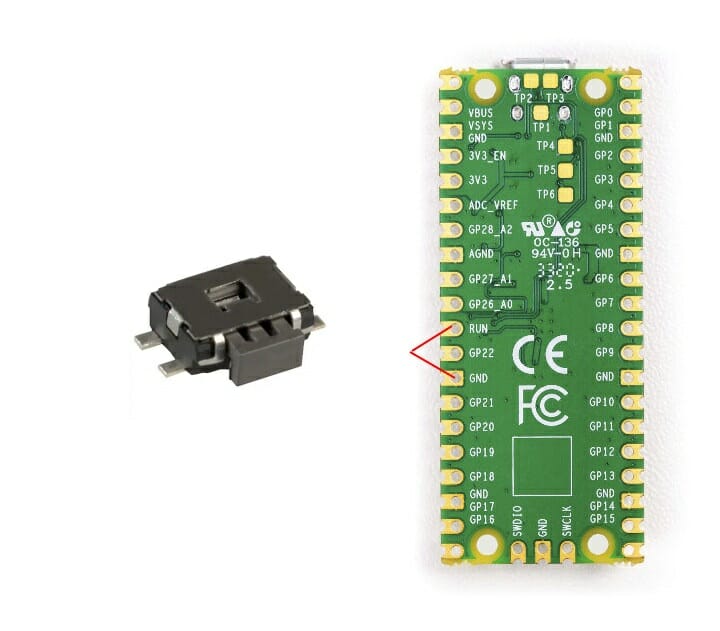
[Update 2: It turns out the button needs to be tilted for it to work, and GP22 still appears to be accessible
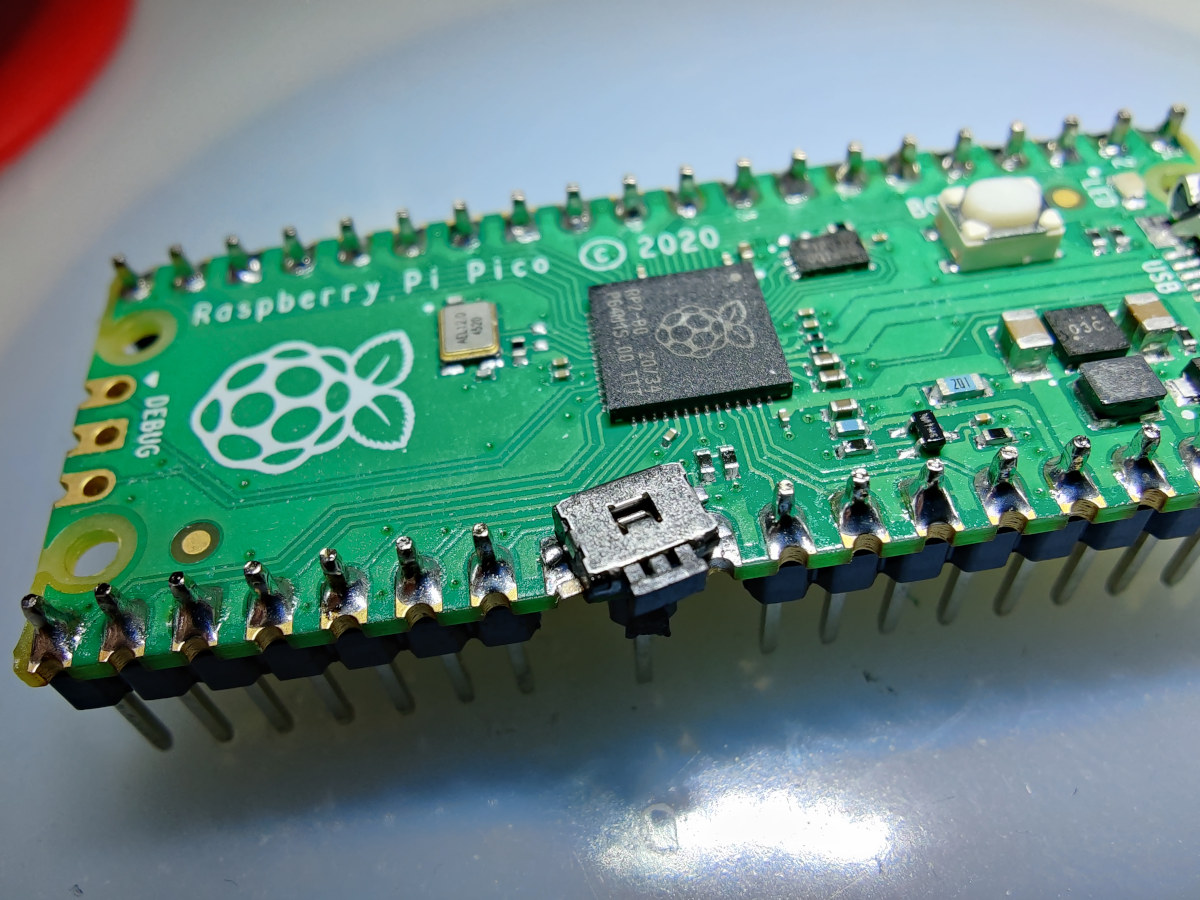
]
[Update 1: I’ve just noticed Pimoroni has started to sell the “Captain Resetti” button that can be soldered on RUN, GP22 and GND pin, so you don’t lose GP22

Jean-Luc started CNX Software in 2010 as a part-time endeavor, before quitting his job as a software engineering manager, and starting to write daily news, and reviews full time later in 2011.
Support CNX Software! Donate via cryptocurrencies, become a Patron on Patreon, or purchase goods on Amazon or Aliexpress


